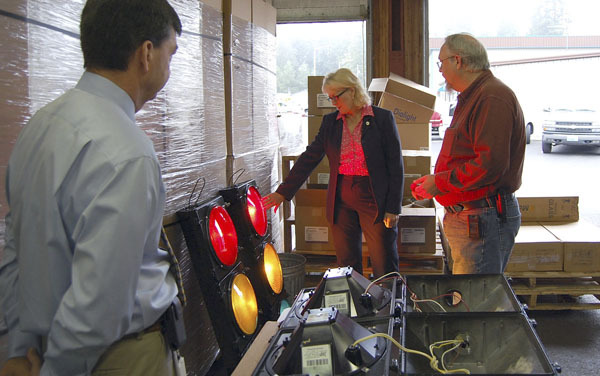Pierce County Executive Pat McCarthy today visited the county Traffic Operations Center to learn about a money- and energy-saving project to retrofit traffic and pedestrian signals.
Public Works and Utilities is retrofitting 75 traffic signals and pedestrian crossings in unincorporated Pierce County. The project involves replacing conventional red-yellow-green lights and pedestrian crossings with LED (light emitting diodes) displays.
The most noticeable difference the public will notice is the new “countdown” feature on pedestrian crossings, which lets pedestrians know how much time they have left to cross the road. The difference that county officials will notice is on the energy bill — the LED signals use 90 per cent less energy and will save the county about $72,000 a year in electricity costs.
The retrofit is included in the $4.3 million Pierce County Energy Efficiency Community Block Grant from the US Department of Energy. The funds are part of the federal stimulus program. The LED project was originally budgeted at $534,000; however the county expects to save close to $100,000 by ordering the materials in bulk and assembling the lights in-house.
“The LED retrofit offers benefits to Pierce County residents-it saves money and contributes to the larger effort to conserve energy and make our government operations more sustainable,” Executive McCarthy said. “And the best part is that it’s fully funded by an energy grant. We’re thankful for this opportunity.”
The project targets goals in the county’s 5-year Sustainability Plan, which contains these goals: reduce electricity and natural gas us in county facilities by 10 percent; convert 50 percent of the county’s general-use fleet to hybrid, electric or alternative-fuel vehicles; bring all areas of Pierce County into compliance with federal air quality standards; boost the practice of purchasing office products with recycled content, increase recycling by 50 percent and reduce landfill waste by 30 percent; and train employees to consider sustainable practices in their everyday work habits.





